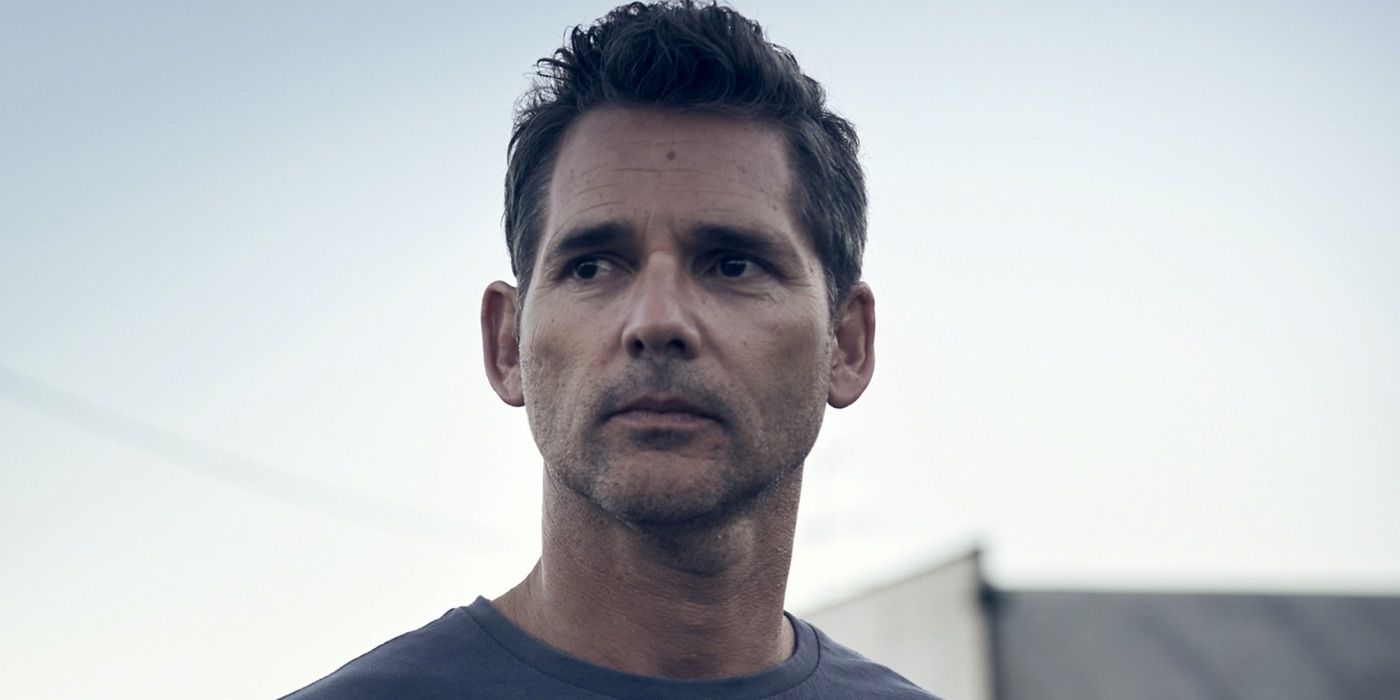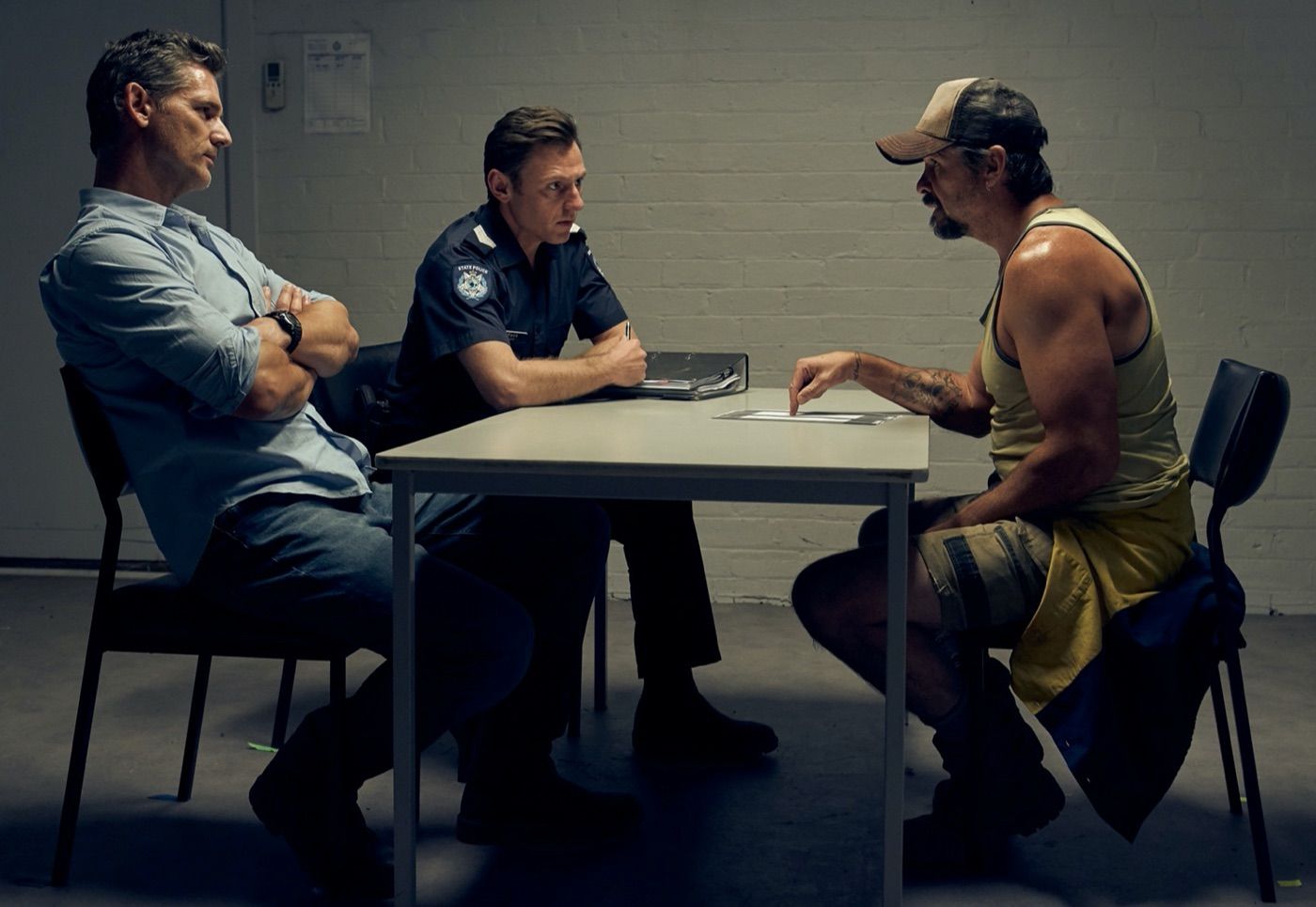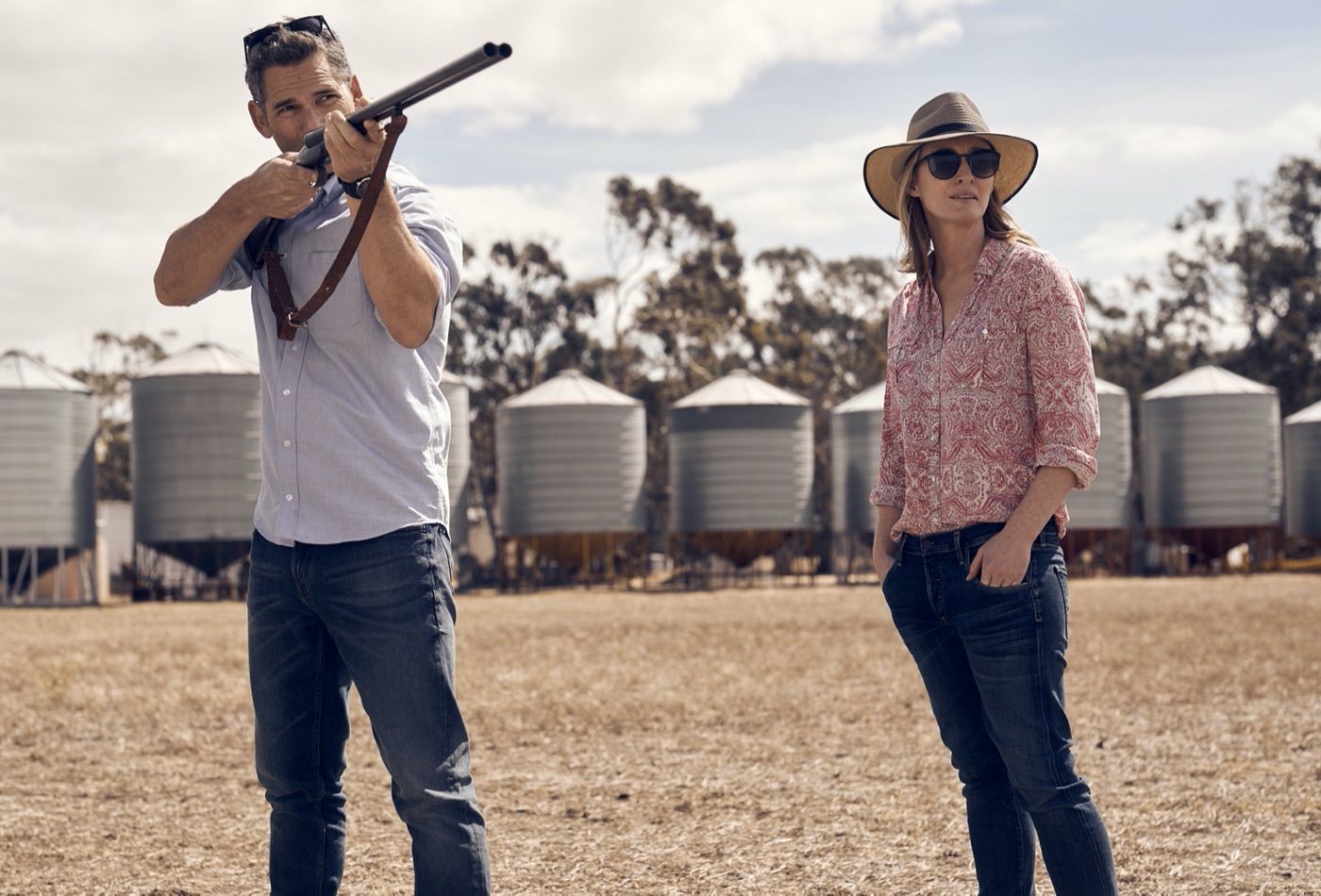From director Robert Connolly and adapted from the novel by Jane Harper, the crime drama The Dry follows Federal Agent Aaron Falk (Eric Bana, who is also a producer on the film) as he returns to his hometown after a more than 20-year absence to attend the funeral of a childhood friend. With that friend having allegedly killed his wife and child before taking his own life, investigating the crime leads Falk to wonder whether the mysterious death of another childhood friend decades earlier could be connected and he decides to stay until he finds answers.
During this 1-on-1 interview with Collider, Bana talked about translating a page-turning thriller for the screen, wanting to get more involved as a producer, his working relationship with Connolly, and manipulating the twists of the storytelling in the editing. He also talked about the 20th anniversary of Black Hawk Down, his experience making Munich, and trying to figure out what’s next.
Collider: I was so just completely enthralled by this story because it felt like turning pages of a novel while watching it.
ERIC BANA: Yeah, and that was a very deliberate thing. I loved Jane Harper’s novel, The Dry, and she did the most incredible job with a page-turning thriller. It was super atmospheric and she did the most beautiful job of depicting the country and the countryside and this drought-stricken town, and we really wanted to do that justice.
When a project like this comes your way, does whether or not you guess the twist when you’re reading it play into whether or not you want to do it? If it’s too easy and you see it coming, do you rethink signing on for something like that?
BANA: I don’t think so. The writing was so great and the setting was something that was so familiar to me that who did what in the end was almost secondary. I think that’s the strength of the book. It’s so tense and so atmospheric and it’s really cinematic. When you read it, you can picture everything. So, I guess it was a bonus that, in the end, really intelligent friends of mine didn’t figure it out, and if they did, it wasn’t until the very, very end. It’s a challenge. I think it’s fun for the audience to have a job to do and to try and figure out what’s happened in the past.
Was it also your idea to sign on as a producer for this, as well? Was that something that you sought out, or was that asked of you?
BANA: It was very natural. The director, Rob Connolly, is a close friend of mine. We have an office together, so we’re always looking for material to do together. And then, this came along and it was just a completely natural fit, and it had the added advantage of it being produced out of my office and with our co-producer Bruna Papandrea, located here in our home state. In terms of how much you can actually be involved versus when you’re working on a film that’s overseas, it was a natural fit for us.
It must be nice to share office space with a filmmaker that you can bounce ideas off of, or try to find things to work together on. Have you talked about a lot of different things, prior to this, that just didn’t work out?
BANA: We have a really ideal arrangement. We share an office, but we do separate things. Rob’s off doing his thing and I’m off doing my thing, and we’re always on the lookout for something to do together. We don’t have a structure that’s under pressure to constantly find things together. And to be honest, we’re really close friends and we just share everything. We share the space, we rely on each other, we encourage each other. It’s a really wonderful thing because it’s a very lonely job, for both sides of the camera. And so, to have someone on your team that’s supportive, all through that, is really wonderful. And then, to get a chance to work closely together again, which we hadn’t for about 12 years, was really special.
There’s still a difference between being friends with somebody and actually wanting to work with them. What is it about the way both of you work that you like?
BANA: I think we share the exact same end goal. Working on this film, we both had the exact same vision for what we wanted the film to be and how we wanted the film to look, our aspirations for it to be purely hyper-cinematic, and the best possible version of the book. In terms of producing, it was a very easy relationship. Our working relationship is very simple because we’re both trying to find the exact same thing.
This was one of those interesting detective stories where you’re suspicious of everyone, including your character. How tricky is it to find that balance between playing someone that you want the audience to have empathy for, but then also have them question him? Was that something that developed naturally out of the story and your understanding of the character, or did you have conversations about that?
BANA: Yeah, it was very intricate, in terms of the writing of the story. Both Rob and I really embraced the notion that most of those elements would be discovered and manipulated in the edit. We knew the edit of this film was gonna be incredibly intricate and long, which it was, and we had to strike the balance. Also, because we have two storylines, one in the past and one in the present, we have flashbacks as a very essential element and the casting of those young actors that play the younger versions of Gretchen, Genevieve O’Reilly’s character, and my own were really essential and the edit was really crucial. Where do you cast the suspicion? Where does it lie? How are you viewing this story and through which lens? It was an incredibly difficult job for Rob, and I’m so proud of his work. I don’t think it’s normal in this genre that it has such emotional baggage as well. What really excited me about the book was the notion that the film version could be even more emotional than the book. There ae so many details in the book that Jane Harper needed to focus on, that she does incredibly well, and we just thought that, in a film version, there were two areas where we could potentially heighten it, and that was with the visual scope and the emotional scope of the characters. I think that’s what we were most excited by.
With your character being so personally connected to the past, it really plays into that because you can feel the pain that he’s still going through.
BANA: Yeah. There’s this wonderful relationship with Genevieve O’Reilly’s character, Gretchen in the present, and you get the sense of what’s been lost, both between them and collectively. They’ve lost a friend in their teens, which we learn, and the circumstances surrounding that is something that drove them apart. I do like the emotional baggage that the characters have in the film, with this idea that someone has to go back to the country town that they grew up in and that he hasn’t been to for over 20 years, and the minute he arrives, we know he’s not welcome. Why is that? We spend the film discovering why that is and experiencing his palpable level of uncomfortableness.
You talked about the long post-production process and the shaping of this in the editing. As a producer, how many different cuts of the film did you see? Did you see it, as it was evolving and being shaped? How does the first time you saw the film compare to seeing the finished product?
BANA: I saw every cut, from the first assembly edit, all the way through to the end. Fortunately, we had a good edit period and a good amount of time that we were able to do the post-production on the film. We had time to find the version of the film that you see. It was really thrilling. It just kept taking shape and getting sharper and sharper. It always felt emotional, and that was something we were very keen to capture. We were very protective of trying not to shorten it too much and turn it into a fast whodunit. We wanted it to feel atmospheric. We wanted it to feel emotional. We wanted you to feel like you can’t travel right now, but by the end of this film, you feel like you’ve just spent two hours in Australia. You could not feel more like you’ve been in Australia than when you watch this film. It’s hyper-real, in terms of its depiction of rural Australia and its struggles in the midst of a drought. That was all very, very deliberate.
This year is the 20th anniversary of Black Hawk Down. What are your memories from that shoot and that set? Do you have any fun stories from making that film?
BANA: There are so many stories from that film, but the biggest takeaway I have and the biggest thrill I have from that film is the fact that three of my closest friends are from that film and we’re still super close today – Bill Fichtner, Kim Coates and screenwriter Ken Nolan. And there’s Orlando Bloom, as well. Friendships that you make in a long production when you’re sharing a corridor in a hotel, the film is full of that. The film is full of groups of three or four actors who have stayed really, really close to this day. There is a kinship when you run across aBlack Hawk Down cast member. There is something very collegiate about how we feel about each other and about that film and about the experience of making that film. The cast list on that film is insane. You forget how many actors have broken through and are doing something amazing. It’s like, “Oh, that guy’s a big star now. And that guy is in that show.” People keep popping up, all over the place. The cast is full of so many incredible people.
What are the highlights that you remember from making Munich and working with Steven Spielberg?
BANA: It was just overwhelmingly positive. I pinched myself every day on that set, for a million reasons. It’s basically my favorite genre, one of my favorite directors, and an incredibly interesting story, in a period that I love, with Steven’s handpicked crew of some of the greatest craftspeople in the industry. Every day was like Disneyland for me, it really was, with the cast that I got to work with. I got to work with Daniel [Craig], pre-James Bond. He was weighing up whether or not to do James Bond while we were filming. We were saying to him, “You’ve gotta do it. Go on, be Bond.” It was just a super special experience. The world was crazy back then and I loved every bit of it. I love the film.
Do you know what’s next for you, or are you in that stage of currently trying to figure out what that means now?
BANA: Yeah, I’m trying to figure it out. I knew it’d be a long period of not working with the pandemic, which has turned out to be the case. I’m not quite sure what I’ll be doing next. I just did a little cameo in Rob Connolly’s next film Blueback, over in Western Australia, which is a Tim Winton adaptation, but I’m involved in that film on an executive producer level. I’m not quite sure what my next big job will be. I’m reading, at the moment. I’m hoping the world keeps getting closer to back to normal. I can’t leave the country, at the moment, so we’ll have to wait and see.
Are you someone that, when you read a script, you know pretty quick into reading a script whether it’s something you want to do?
BANA: Yes, I know if it’s not for me, pretty quickly. I always finish them, of course. I just keep reading until I fall in love, basically, and then I’m like a bull and I can’t let it go. I just keep waiting for that response. Obviously, The Dry was one of those ones for me, where the minute I read the book, which was passed across to me, as all my adaptations are, by my wife across the pillow. She said, “You need to read this,” and she was right once again. I’ll have to look at what’s on her bedside table to get a better understanding of what might be next.
The Dry is now in theaters and on-demand.



